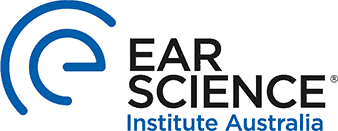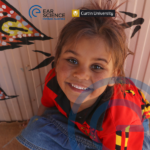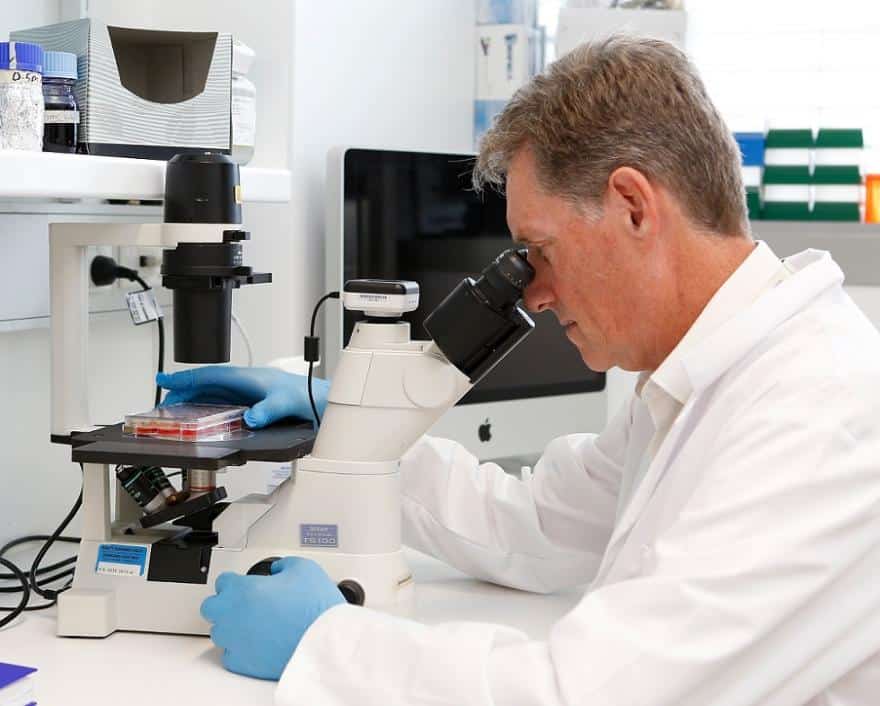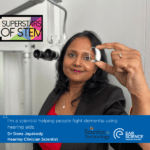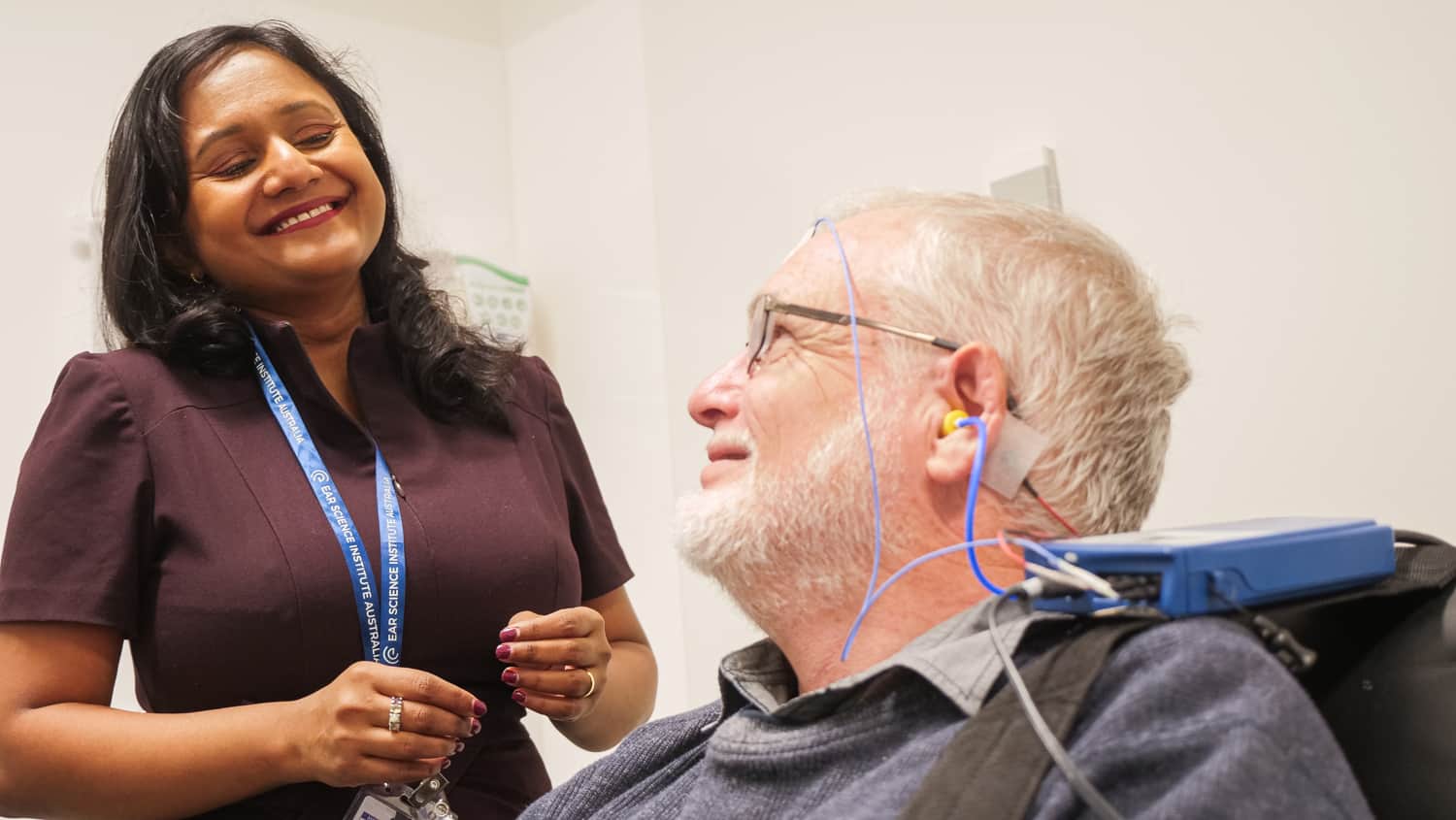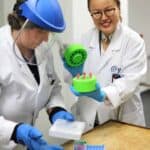Hearing loss understandably has a profound impact on the lives of those affected, and there can be many causes including loud noises, ageing, disease and genetic mutations. Usher syndrome is a genetic condition that causes not only hearing loss but also vision impairment and balance difficulties.
Although Usher syndrome (USH) is generally rare, affecting about 400 000 people worldwide, it is the leading cause of combined hearing and vision loss. Sadly, so far there is no cure for USH, despite it being discovered more than a century ago by Charles Usher in 1914.
Cause of Usher Syndrome
Many genetic mutations can cause Usher syndrome, and these are distributed across 11 genes. Mutations in these genes typically result in hearing loss because they cause proteins important for hearing, in the inner ear, to be produced in shortened non-functional forms. This means that important structures of the inner ear do not develop normally, or may become unstable and break down, which impairs hearing.
Sound waves may travel normally through the ear canal and middle ear, into the cochlea, reaching the organ of Corti and its specialised cells, called hair cells, that are able to convert the fluid pressure waves into nerve impulses. In Usher syndrome the hair cells are missing or dysfunctional. There are no nerve impulses generated and therefore no signal to travel via the auditory nerve to the brain.
Inner ear hair cells have an array of “hair-like” structures on their surface called stereocilia, which bend as the cochlear fluid moves and this generates the electrical signal that we sense as sound. Stereocilia are grouped together as a bundle in an inverted V shape. The tallest stereocilia are at the point of the V and they decrease in length step-by-step. Many forms of genetic hearing loss relate to the breakdown of this highly specialised cell structure.
Each stereocilium is connected to its neighbours by links made up of junction proteins such as cadherin. Alterations in these proteins or in the proteins that make up the stereocilia themselves can result in improperly formed bundles that lack the structure necessary to detect and transmit sound to the auditory nerve. These types of mutations are why patients with Usher syndrome develop hearing loss.
Type 1 Usher Syndrome
There are three main types of Usher syndrome based on severity. Type 1 accounts for 30-40 per cent of cases and is the most severe. Patients with USH type 1 are born with profound hearing loss, and face progressive vision loss due to retinitis pigmentosa as well as balance problems, or vestibular dysfunction, which begin in childhood.
Mutations in several genes have been identified as causative for USH type 1, and the syndrome is grouped further into subtypes depending on the particular mutation a patient carries. There are 6 subtypes for USH type 1 (USH1B, USH1C, USH1D, USH1F, USH1G, and USH1J) and the genes affected include MYO7A, CDH23, and PCDH15, which all produce proteins expressed in stereocilia that are critical for the function of hair cells.
Mutations in MYO7A are the most common, causing half of all USH type 1 cases. This gene encodes the protein Myosin VIIA that plays an important role in directing proteins to their appropriate positions in the cell. As a result of abnormal Myosin VIIA in the inner ear and retina cells, significant disturbance of their usual protein organisation can kill the cells or prevent their normal function, ultimately leading to deafness, blindness and vestibular dysfunction present in Usher syndrome.
Type 2 Usher Syndrome
USH type 2 patients typically have moderate deafness and retinitis pigmentosa, which only appears during late puberty or early adulthood, vestibular dysfunction is rare in USH type 2. There are three subtypes of USH type 2 identified so far – USH2A, USH2C, USH2D – and these are associated with mutations in the USH2A, GPR98, and WHRN genes, respectively. These genes produce proteins found in the stereocilia and are either known or predicted to be important for hair cell function.
Another gene — PDZD7 — acts as an Usher syndrome modifier because it interacts with both USH type 1 and type 2 genes. As a result, PDZD7 mutations can also interrupt hair cell organisation and the process of sound transduction to nerve fibres, causing hearing loss and deafness.
Type 3 Usher Syndrome
Lastly, USH type 3 is the least common, accounting for less than 5% of all USH cases. Interestingly, most USH type 3 patients are from Finland. USH type 3 is characterised by variable and progressive hearing and vision loss, and some patients also experience balance problems. USH type 3 has two subtypes USH3A and USH3B, which are associated with mutations in the CLRN1 and HARS genes, respectively. The functions of the proteins encoded by these genes are not well understood, but there is evidence to show they are located in hair cells.
Treatment of Usher Syndrome
No matter which type of Usher syndrome patients fall into, the disorder remains incurable. Studies suggest that treatment with hearing aids, cochlear implants or gene therapy can relieve the hearing-associated symptoms in many patients, allowing them to perform daily tasks independently.
But to work towards a cure, it is important to understand how different genetic mutations can cause hearing loss. One of the ways we study this in our laboratory is by taking a small sample of patient skin cells and turning them into stem cells, which contain their patient-specific genetic mutations. These induced pluripotent stem cells (iPSC) are a special type of cell that has unlimited potential, so they can become any type of cell in the body.
We are using specialised experimental techniques and different biological signalling pathways to encourage these pluripotent stem cells to become inner ear organoids. These are essentially a cluster of cells with features that resemble the human inner ear during development. They contain the different cell types found within the inner ear including hair cells, organised into an appropriate structure.
This allows us to study the effects of the different genetic mutations that Usher patients have on the development of these inner ear cells and structures. From there, we are able to test potential therapeutic strategies, such as gene editing, to see whether we can correct the abnormalities and provide hope for these patients.
In addition to helping us understand the mechanisms of disease, iPSC may also have a clinical application in the treatment of USH. Although not hearing-related, patient-derived iPSC are currently being used in clinical trials for the treatment of Parkinson’s disease in Japan. In addition, early-stage inner ear cells derived from iPSC have been successfully transplanted into mouse models, resulting in the regeneration of some inner ear structures, such as hair cells. These exciting advances could pave the way for similar therapies to be used to treat human USH patients.
However, transplantation of iPSC into the human inner ear remains an emerging therapy. More studies into disease modelling and testing for efficacy and ototoxicity of iPSC are still needed in order to develop stem cell therapy into a viable treatment for hearing loss or deafness.
Despite being a rare disease, Usher syndrome is the leading cause of deafblindness and understandably has an enormous impact on the daily lives of those affected. Whilst currently incurable, great strides are being made towards better understanding the disease mechanisms and the effects of different genetic mutations. We hope that gene editing and stem cell technology can successfully reverse mutations and provide relief for the symptoms of Usher syndrome.
